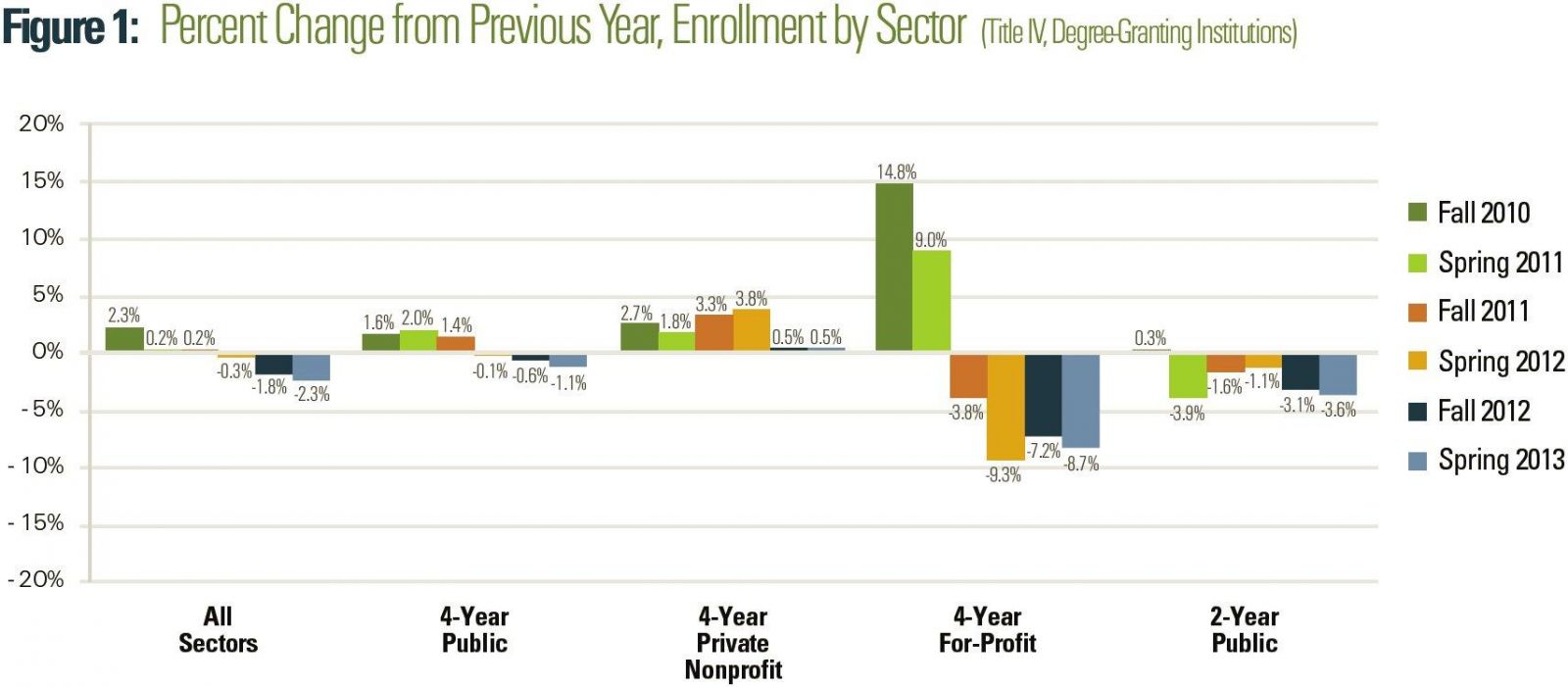You have /5 articles left.
Sign up for a free account or log in.
The decline in college enrollments appears to be accelerating, with 2.3 percent fewer students enrolled on campuses this spring than there were in spring 2012, according to data published Thursday by the National Student Clearinghouse.
The 2.3 percent dip is steeper than the 1.8 percent decline that the clearinghouse reported in December when it compared fall 2012 numbers to those from fall 2011. These reports represent the clearinghouse's first such twice-yearly analyses of fall and spring enrollments, which the Virginia-based organization says will be annual going forward. The clearinghouse collects data from institutions that represent about 95 percent of all enrollments at colleges that grant degrees and are eligible to award federal financial aid. (The studies are supported by the Pearson Foundation.)
College enrollments typically fall or flatten when the economy improves, so the clearinghouse's report of declines isn't terribly surprising (despite the relatively slow improvement in the job market, as defined by unemployment figures). But the size of the decrease is likely to be of concern to college officials trying to fill their classes to deal with increased costs or flattening state support.
The enrollment drops were steepest by far for four-year for-profit colleges, some of which have curtailed their admissions purposefully to try to respond to concerns about dropout rates and other student outcomes. Four-year for-profit colleges had 8.7 percent fewer students in spring 2013 than in spring 2012, and their overall enrollments had dipped to 1.35 million students from 1.63 million in spring 2011, a drop of 17.2 percent.
Two-year public colleges saw a spring-to-spring enrollment decline of 3.6 percent, while four-year publics saw their student bodies drop by 1.1 percent and four-year private nonprofit colleges actually saw their enrollments grow by 0.5 percent from spring 2012 to spring 2013.
Every region suffered an enrollment decline this spring, though it was steepest in the Midwest (2.6 percent) and smallest in the Northeast (0.9 percent). Enrollments fell for full-time (2.7 percent) and part-time (1.6 percent) students alike, according to the clearinghouse data.
Spring-to-spring enrollments fell more among students older than 24 (3.6 percent) than for those 24 or younger (1.4 percent). And enrollment drops were bigger for women (2.7 percent) than for men (1.7 percent).










